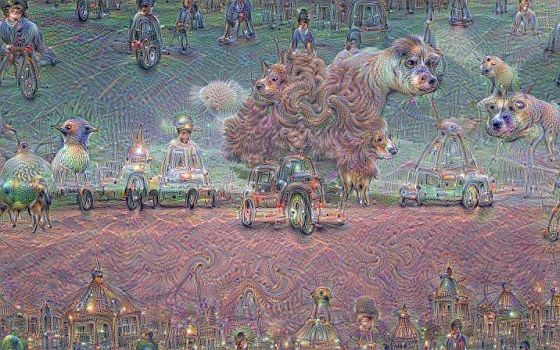Harvard Magazine: Toward the end of World War II, while thousands of Europeans were dying of hunger, 36 men at the University of Minnesota volunteered for a study that would send them to the brink of starvation. Allied troops advancing into German-occupied territories with supplies and food were encountering droves of skeletal people they had no idea how to safely renourish, and researchers at the university had designed a study they hoped might reveal the best methods of doing so. But first, their volunteers had to agree to starve.
The physical toll on these men was alarming: their metabolism slowed by 40 percent; sitting on atrophied muscles became painful; though their limbs were skeletal, their fluid-filled bellies looked curiously stout. But researchers also observed disturbing mental effects they hadn’t expected: obsessions about cookbooks and recipes developed; men with no previous interest in food thought — and talked — about nothing else. Overwhelming, uncontrollable thoughts had taken over, and as one participant later recalled, “Food became the one central and only thing really in one’s life.” There was no room left for anything else.
Though these odd behaviors were just a footnote in the original Minnesota study, to professor of economics Sendhil Mullainathan, who works on contemporary issues of poverty, they were among the most intriguing findings. Nearly 70 years after publication, that “footnote” showed something remarkable: scarcity had stolen more than flesh and muscle. It had captured the starving men’s minds.
Mullainathan is not a psychologist, but he has long been fascinated by how the mind works. As a behavioral economist, he looks at how people’s mental states and social and physical environments affect their economic actions. Research like the Minnesota study raised important questions: What happens to our minds — and our decisions — when we feel we have too little of something? Why, in the face of scarcity, do people so often make seemingly irrational, even counter-productive decisions? And if this is true in large populations, why do so few policies and programs take it into account?
In 2008, Mullainathan joined Eldar Shafir, Tod professor of psychology and public affairs at Princeton, to write a book exploring these questions. Scarcity: Why Having Too Little Means So Much (2013) presented years of findings from the fields of psychology and economics, as well as new empirical research of their own. Based on their analysis of the data, they sought to show that, just as food had possessed the minds of the starving volunteers in Minnesota, scarcity steals mental capacity wherever it occurs—from the hungry, to the lonely, to the time-strapped, to the poor.
That’s a phenomenon well-documented by psychologists: if the mind is focused on one thing, other abilities and skills — attention, self-control, and long-term planning — often suffer. Like a computer running multiple programs, Mullainathan and Shafir explain, our mental processors begin to slow down. We don’t lose any inherent capacities, just the ability to access the full complement ordinarily available for use.
But what’s most striking — and in some circles, controversial — about their work is not what they reveal about the effects of scarcity. It’s their assertion that scarcity affects anyone in its grip. Their argument: qualities often considered part of someone’s basic character — impulsive behavior, poor performance in school, poor financial decisions — may in fact be the products of a pervasive feeling of scarcity. And when that feeling is constant, as it is for people mired in poverty, it captures and compromises the mind.
This is one of scarcity’s most insidious effects, they argue: creating mindsets that rarely consider long-term best interests. “To put it bluntly,” says Mullainathan, “if I made you poor tomorrow, you’d probably start behaving in many of the same ways we associate with poor people.” And just like many poor people, he adds, you’d likely get stuck in the scarcity trap. [Continue reading…]


